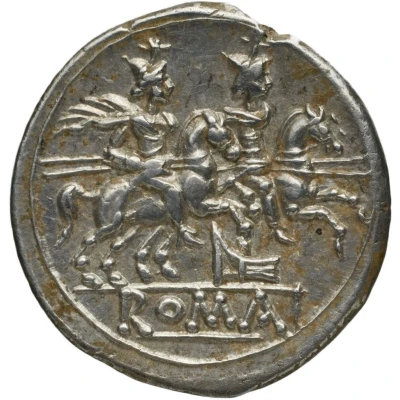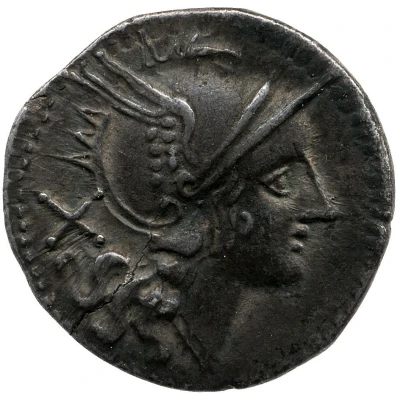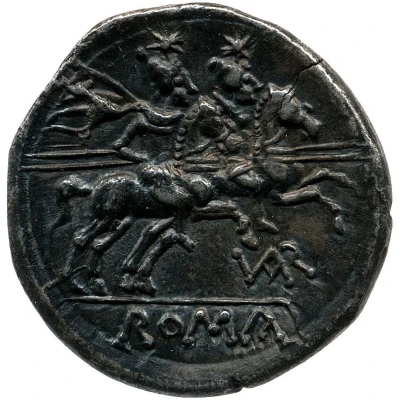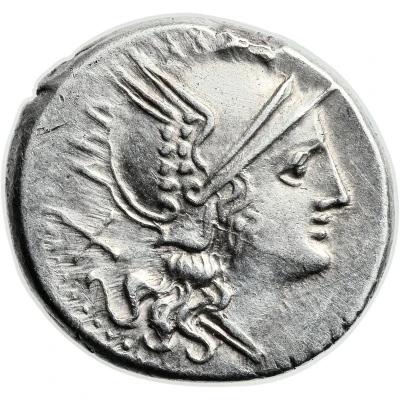
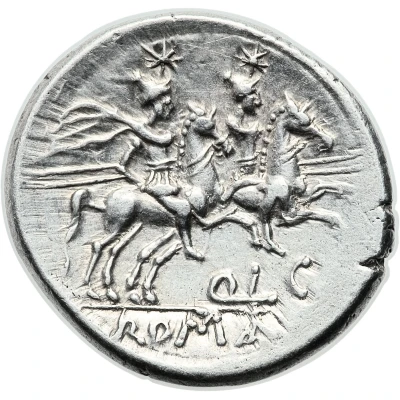

© Heritage Auctions
Denarius Lutatia: Quintus Lutatius Cerco or Catulus; QLC ROMA 206 BC - 200 BC
| Silver | 4.45 g | 21 mm |
| Issuer | Rome › Roman Republic (509 BC - 27 BC) |
|---|---|
| Period | Republic (509 BC - 27 BC) |
| Type | Standard circulation coin |
| Years | 206 BC - 200 BC |
| Value | Denarius (1) |
| Currency | Denarius of 10 Asses (221 – 141 BC) |
| Composition | Silver |
| Weight | 4.45 g |
| Diameter | 21 mm |
| Shape | Round (irregular) |
| Technique | Hammered |
| Orientation | Variable alignment ↺ |
| Demonetized | Yes |
| Updated | 2024-10-06 |
| Numista | N#66751 |
|---|---|
| Rarity index | 100% |
Reverse
Dioscuri on horseback galloping right, cloak floating behind, each holding an horizontal spear, two stars above; below, moneyer mark; inscription in exergue.
Script: Latin
Lettering:
QLC
ROMA
Translation:
Q (-uintus) L (-utatius) C (-erco)
or
Q (-uintus) L (-utatius) C (-atulus)
Comment
The gens Lutatia was a plebeian family at Rome.There is still some doubts regarding the use of Cerco or Catulus for this moneyer mark as both cognomen were in use at that time by the gens Lutatia.
RCV lists, under the same reference, the same denarius with moneyer mark VAR in monogram for Terentius Varro. (RRC#126/1, CRR#275)
Interesting fact
One interesting fact about this coin is that it features a unique design on its reverse side, which depicts a triumphant Roman general riding a chariot, surrounded by symbols of victory and honor. This design was meant to commemorate the military victories of the Roman Republic and reinforce its reputation as a powerful and prosperous state.

